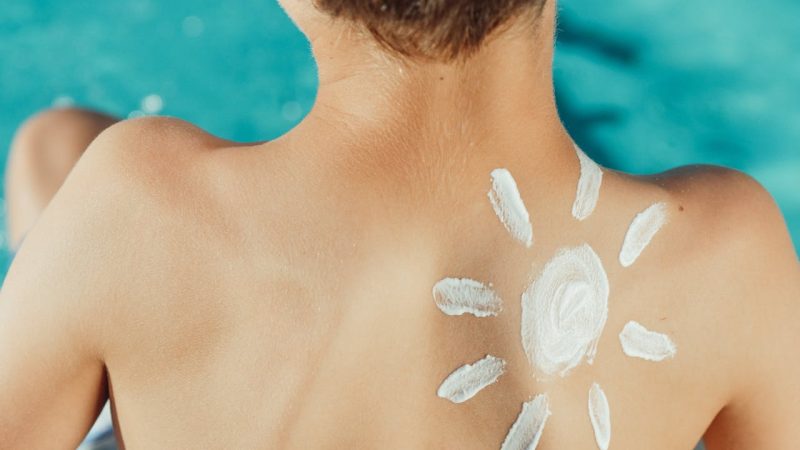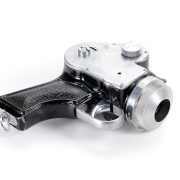When building your skincare and makeup routine, one of the most debated questions is: should sunscreen be applied before or after primer? Both products are essential — sunscreen protects your skin from harmful UV rays, while primer ensures your makeup stays flawless all day. But the order you apply them makes a huge difference.
The short answer? Sunscreen should always go before primer. In this article, we’ll explain why, break down how to layer products correctly, and share tips to keep your skin protected while achieving a smooth makeup finish.
Understanding Sunscreen’s Role in Your Routine
Sunscreen is a non-negotiable step in skincare. It:
- Shields against UVA and UVB rays.
- Prevents premature aging and wrinkles.
- Reduces the risk of skin cancer.
To work properly, sunscreen must form an even, protective barrier directly on your skin — after moisturizer but before makeup products like primer or foundation.
What Does Primer Do?
A makeup primer is applied before foundation to create a smooth base. Depending on the formula, primers can:
- Blur pores and fine lines.
- Control oil and shine.
- Hydrate dry skin.
- Extend makeup wear.
Primer has no sun protection benefit, so it should never replace sunscreen. Its purpose is cosmetic, while sunscreen’s is protective.
The Correct Order: Sunscreen Before Primer
The general rule of layering products is:
Skincare → Sunscreen → Primer → Foundation/Makeup
This ensures:
- Sunscreen sits directly on skin for maximum protection.
- Primer creates a smooth base for makeup without interfering with SPF coverage.
- Both products perform their intended functions without clashing.
Why Sunscreen Shouldn’t Go on Top of Primer
Applying sunscreen after primer weakens its effectiveness. Here’s why:
- Uneven application: Sunscreen can’t form a uniform barrier over silicone or oil-based primers.
- Reduced SPF protection: Mixing with primer may dilute coverage.
- Makeup issues: Sunscreen on top of primer can cause pilling, streaking, or patchy makeup.
For reliable sun defense, sunscreen needs direct contact with your skin.
Chemical vs. Mineral Sunscreens: Does It Matter?
Yes, the type of sunscreen affects how it layers under primer:
- Chemical Sunscreens: Absorb UV rays and convert them into heat. They need a few minutes to absorb fully, so apply and let sit before primer.
- Mineral Sunscreens (Physical): Sit on top of the skin and reflect UV rays. They may feel heavier but generally layer well under primer.
Both types work well under primer as long as applied in the right order.
How to Apply Sunscreen and Primer Together (Step by Step)
Here’s the best routine for layering:
- Cleanser – Wash your face.
- Moisturizer – Apply if needed for hydration.
- Sunscreen – Use about ½ teaspoon for face and neck. Apply evenly.
- Wait 2–3 Minutes – Let sunscreen absorb and set.
- Primer – Smooth a small amount over areas with texture, oiliness, or large pores.
- Foundation/Makeup – Apply as usual.
Common Mistakes to Avoid
Many people unintentionally weaken their sunscreen protection by making these mistakes:
- Applying primer first – Creates a barrier between sunscreen and skin.
- Mixing sunscreen with primer or foundation – Dilutes SPF and destabilizes formulas.
- Using too little sunscreen – Less than recommended amounts reduce effectiveness.
- Skipping reapplication – Sunscreen should be reapplied every 2–3 hours outdoors.
Can You Use Primer With SPF Instead of Sunscreen?
Some primers contain SPF, but they shouldn’t replace sunscreen. Here’s why:
- SPF makeup products are applied too thinly to reach labeled protection.
- Sunscreens undergo strict testing, while primers with SPF are not formulated for primary sun protection.
- You’d need to apply an excessive amount of primer to achieve true SPF coverage.
Always treat SPF primers as a bonus, not your main defense.
Choosing the Right Primer for Your Sunscreen
Not all primers pair perfectly with sunscreen. To avoid clumping or greasiness:
- Pair mattifying primers with dewy sunscreens to balance shine.
- Use hydrating primers if your sunscreen feels drying.
- Avoid heavy silicone primers with thick mineral sunscreens (they may pill).
- Test different combinations to see what works best for your skin type.
Pro Tips for Flawless Application and Protection
- Wait before layering: Give sunscreen time to settle before primer.
- Reapply with SPF mists/powders: Helps maintain protection without ruining makeup.
- Pick lightweight sunscreens: Gel or fluid sunscreens are best under makeup.
- Don’t forget your neck and ears: These areas are often missed.
Conclusion
So, should you apply sunscreen before or after primer? The correct answer is always before. Sunscreen must be the final step in your skincare routine to provide reliable protection, while primer should be the first step in your makeup routine.
By following the right order, you’ll not only safeguard your skin against UV damage but also enjoy smooth, long-lasting makeup. Remember: primer makes your makeup better, but sunscreen makes your skin healthier.
FAQs
1. Can I skip primer and just use sunscreen before makeup?
Yes. Primer is optional, but sunscreen is essential. You can apply foundation directly over sunscreen.
2. How long should I wait after sunscreen before applying primer?
Wait about 2–3 minutes to let sunscreen absorb and avoid pilling.
3. What if my sunscreen already has primer-like benefits?
Some sunscreens blur pores or control oil. In that case, you may skip primer.
4. Do I need to reapply primer with sunscreen?
No. You only need to reapply sunscreen every 2–3 hours, not primer.
5. What type of sunscreen is best under makeup?
Lightweight, non-greasy, fast-absorbing sunscreens (gel, fluid, or serum-like textures) work best under primer and foundation.
Also read: Makeup Primer Before or After Sunscreen? The Right Order Explained









